The Hobby within the Hobby: Storage in Advanced Squad Leader
By David Garvin
In any board game, or so I believe, having your pieces ready to play in short order is conducive to an enjoyable time. This is especially true when breaking in a new player. It can be quite frustrating for a new player if an excessive period of time is spent just trying to find the pieces to play. “No, really, it’s a fun game! Just let me find this last piece…” sure isn’t going to get anyone interested. In fact, this is the exact opposite way to make a positive first impression. A better way, perhaps, would be to have the game set up quickly, and maybe – just maybe – impress your newfound opponent just how beautiful the game is. This, my friends, a certain way to impress the newcomer to Advanced Squad Leader (ASL).
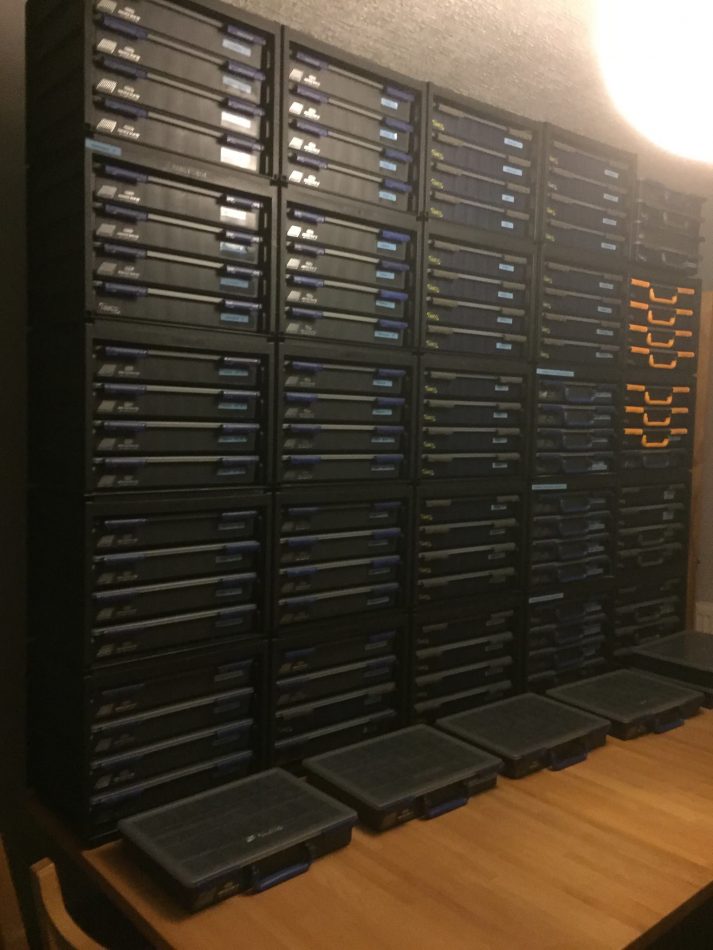
As of the time of writing this article, there have been 19 Core Modules issued, including four updated versions. This represents over eighteen nationalities, spanning from the early battles of the far east to the Korean War. There are some distinctions within nationalities, such as the difference between Wehrmacht and Waffen-SS troops, or the various US forces, from Early War US, “regular” US, USMC, and then of course the American Army of the Korean war.
Each of these forces has a complete set of counters, representing the various units types, from the absolutely inept Soviet Conscripts to the overpowering Sissi squads of the Finnish Army. And then there are the many counter sets from the multitude of third-party producers. If someone wants to play a game quickly, then the forces of both sides have to be sorted efficiently, including getting the right leaders, support weapons, and AFVs. To ensure this efficiency, then no matter how many modules a person has, then it would be wise to have the counters sorted in a manner that allows for quick setup.
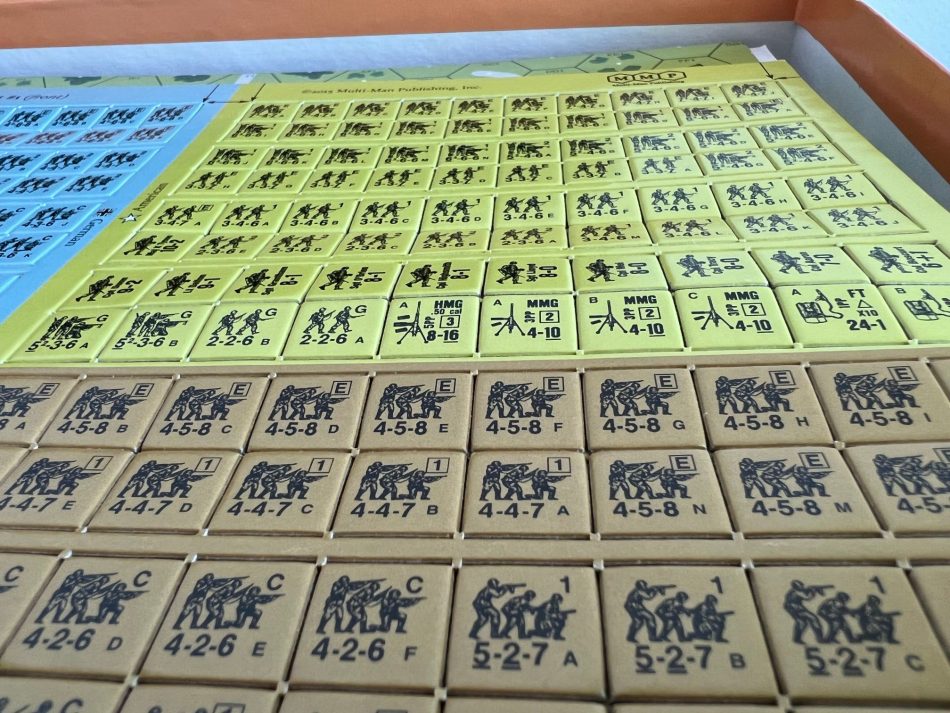
When I first started playing Squad Leader back in the early 1980s, I only had to deal with three nationalities: German, Soviet, and American. That was it. There were very few squad types and only a handful of AFVs. My storage solution was simple: I put each nationality into its own plastic baggy and kept those baggies in the game box. With so few components, it was an easy and viable solution. It didn’t take long to set up a game. Adding the first gamette, Cross of Iron, I started to have a problem. Even though no new nationalities were added, the game did add several AFV and guns. Further to this, a new unit type – Waffen-SS – was added to the German order of battle. Although I didn’t get any with these specific games, I was able to use a counter tray from other games. Even then, the easiest solution seemed to be to continue to use the ubiquitous plastic sandwich baggy as the preferred method of storage.
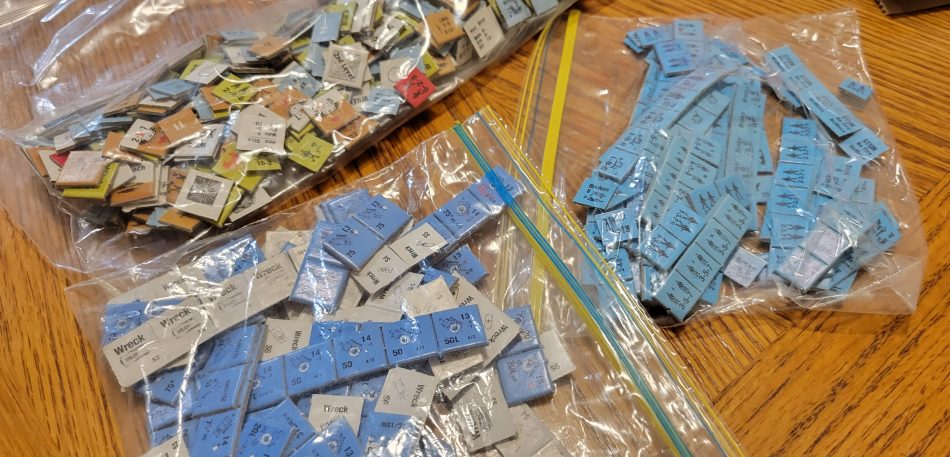
Moving into the 21st Century, and moving into ASL, I quickly learned that not only was counter storage to be a consideration for me, but it wasn’t going to be so simple as to separate my counters by type or nationality. Instead, I would have to consider many factors, not the least of which was transportability. It would be all well and good for me to have a wall of counter trays in my game den, but if I am unable to bring my counters with me as I attend one of the many tournaments hosted across the globe every year, then I may as not sort them at all.
That said, there are those among the hobby who have home kits and away kits. But as for what I have found as I have sunk deeper and deeper into the hobby, is that storage of counters (and other items) is a bit of a hobby in and of itself. And this is true: though I am a prolific ASL gamer – as of 29 March 2022, I have played a total of 26 games this year alone – I am also a collector.
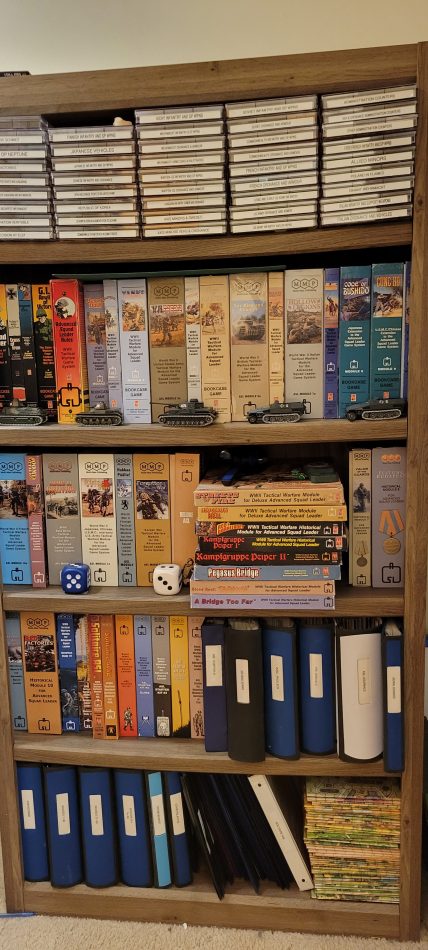
What I have learned over the past seven years of playing ASL is that storage is as much a topic of conversation as the game is itself. Some sub-topics include:
- Clipping: yes or no?
- Storage Solutions
- Travel Solutions
CLIPPING
If I were to try to explain this to a non-gamer, well, I’m not sure what I would say. But in the end, clipping is simply what one does to remove the “nubs” typically found when a counter is removed from its tree. This is done for both form and function. Aesthetically, a well-clipped counter is a thing of beauty. One that has been clipped without care, however, is an atrocity! As for function, when counters are stacked, the lack of the “nubs” on the corners prevents them from latching together and causing a table-top disaster. Some like to clip and there are a number of solutions, ranging from using nail clippers to more sophisticated methods, such as a corner rounder from Oregon Laminations.
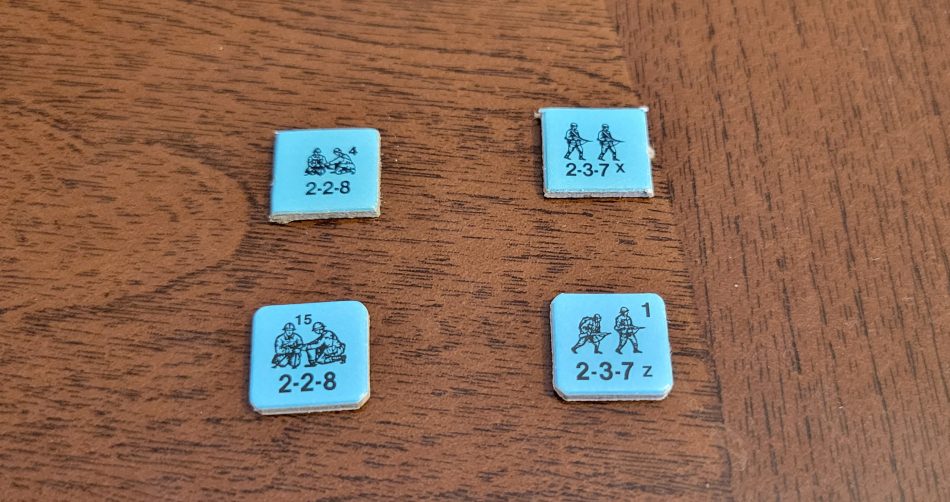
STORAGE SOLUTIONS
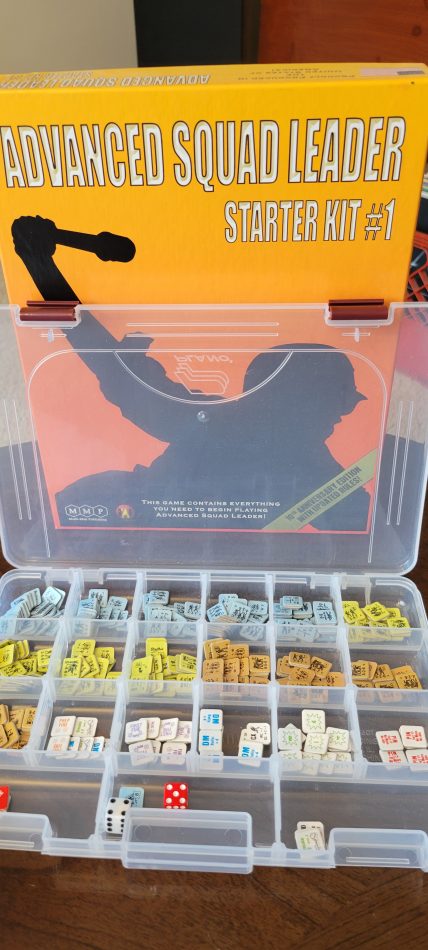
When I bought a set of ASL gear (second-hand), the majority of the components were already stored and sorted. The man from whom I bought the set preferred to use Plano model 3701 trays. These have thirty-four slots, with each slot able to be customized with the removable slots between them. These are quite popular, are durable, and typically just one is needed for some army sets, but two to cover all the major allies; one tray for infantry and their support weapons and the second for ordnance and vehicles. Model 3601 is smaller and has just twenty-one slots. These are best used for smaller products, such as the Starter Kits.
I have since adopted a different method for my official ASL gear: the 27-compartment tray from the Container Store. I need more of these for some armies (the Germans take 5: 3 for the Wehrmacht and two for the Waffen-SS), but these take less space and are more efficient. They travel well and store well as can be seen in my previous photo of my official ASL Gear. There are other methods for storing, some as simple as going to a local hobby store and getting a plastic storage tray. In fact, one could even look to some old wargames that had counter storage. They fit in the box and are good enough for personal use.
The main thing about ASL is that one will travel to play the game. When hosting someone, it’s customary for the host to provide all the gear. But when going to a tournament, one will have to bring one’s own gear. Some people like to bring a little bit of everything and all that entails. Others bring only the major allies. And of course, some are in between.
The DC Conscripts ASL club of the Washington, DC area started hosting tournaments in 2018, and they focused on two opposing armies in order to reduce the travel load. But most tournaments will provide their scenario list well in advance, allowing travelers to pack appropriately. In order to travel as efficiently as possible, any of the storage solutions already listed are sufficient. One just has to make sure that upon arrival, the counters aren’t all just mixed in together; you may as well just dump them into a bag and away you go!
So, there it is. If you plan on joining the ASL hobby, then be forewarned. The purchase of the Rule Book and the initial module, Beyond Valor is enough to provide you with months and months of gaming; however, if you’re like me, it won’t be enough. Not only will you buy more components, but you’ll also start to wonder how to store your stuff. I’ve listed some viable options, but remember this: I’ve not even talked about the map boards or the overlays, let alone the scenario cards. And then of course you’ll wonder what to do with all the third-party components: do I mix them in or do they stand alone? Those questions, my friend, you must answer by yourself. Happy Collecting!
David Garvin is an avid ASL collector and player. He spends days upon days up in Nova Scotia wondering what scenario to play next.

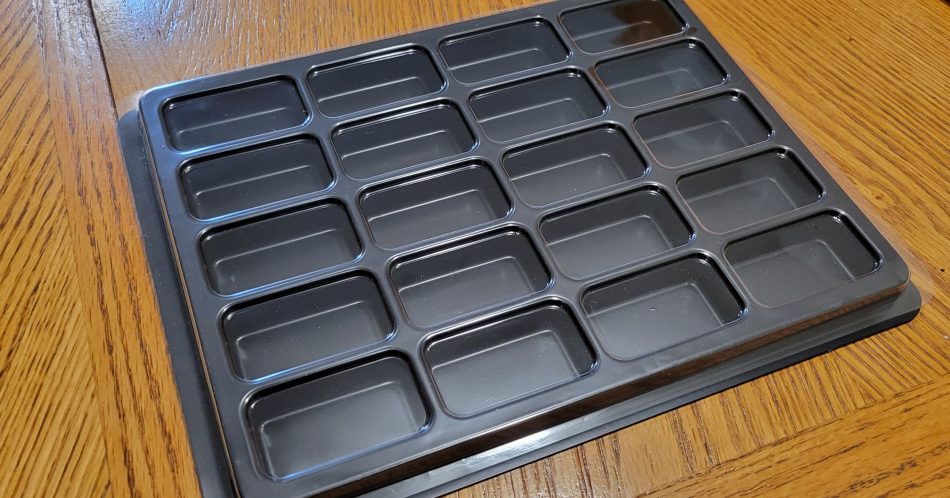
Love the use of my RAACO storage for the header and the Wall of RAACO next down, these are old pics and both take up a lot more room nowadays
The standard by which all other storage methods are measured!
Also of note, Mr Gray is the owner of the counters in the first two photos. They were found via Google Search; so, yes, even Google knows. Ha!
I think there is a new king of storage solutions to dethrone RAACO: the Slovakian 3D-printed boxes!
With the proliferation of 3D printers, I’m certain there will be a boom in storage solutions!
I personally use the Japanese brand HOZAN parts boxes for my storage solution. Hozan.co.jp
Euro players, too. Here’s my pretty bits collection.